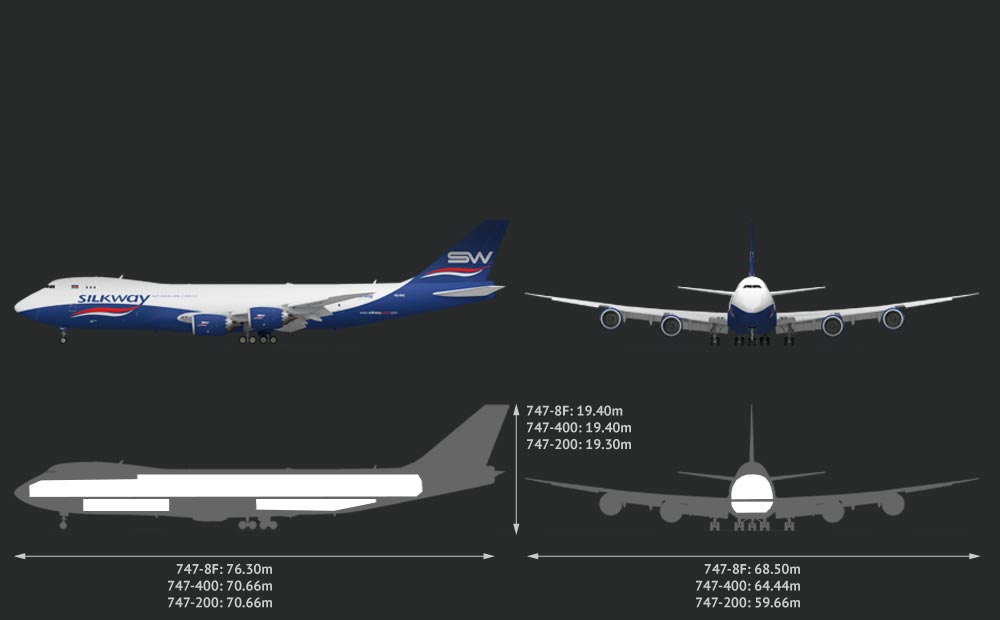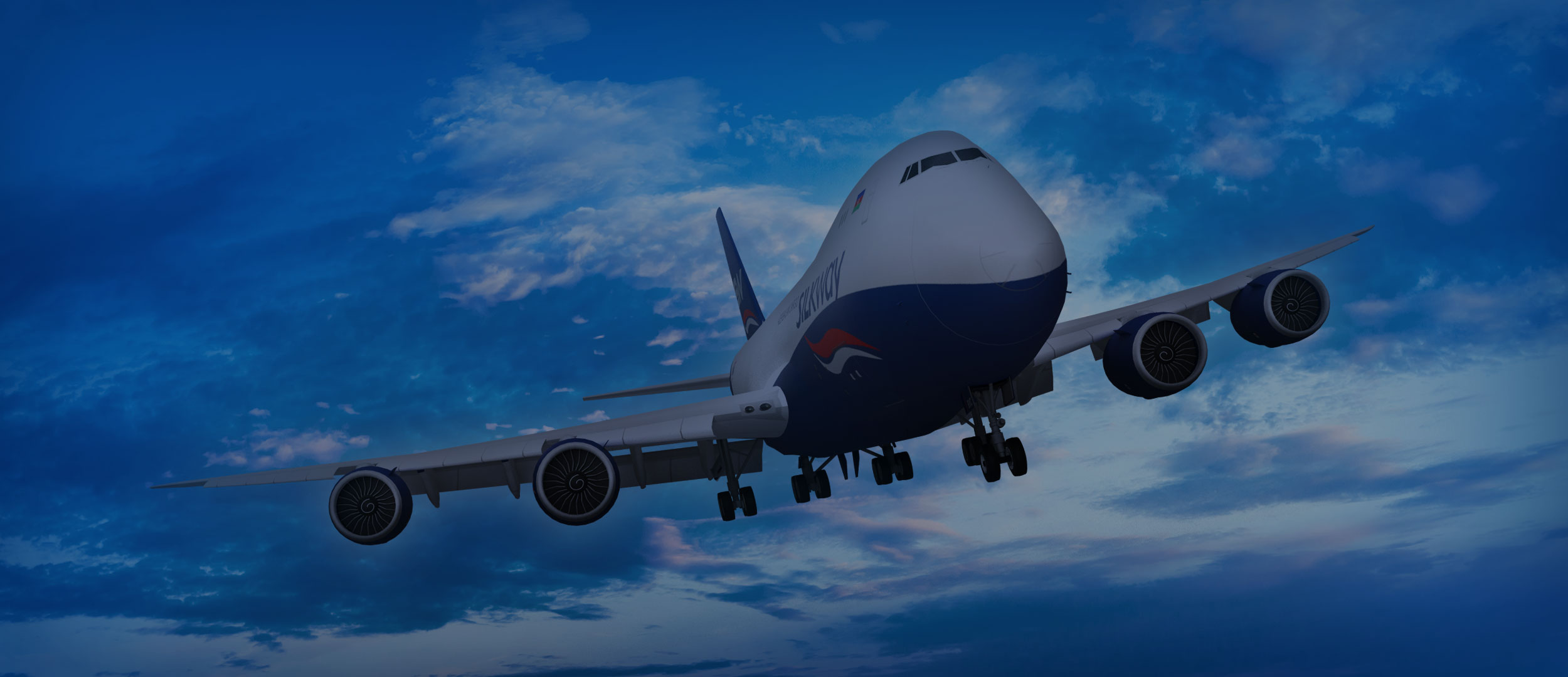
Exclusive Access to the Boeing 747-400F with Silk Way West
The Boeing 747 is one of the world’s most popular choices for commercial cargo airplanes. The 747-400F cargo-carrying model features a wide fuselage along with a large side cargo door and distinctive nose cargo door, allowing easy straight-in access for oversized freight and palletized shipments.


Boeing 747-400F: The Legendary Jumbo Jet Freighter
The Boeing 747-400F, affectionately known as “the jumbo jet”, has been a pioneering workhorse in the air cargo industry for decades. First introduced in 1993, this variant of the iconic 747 family was specifically designed to meet the growing demand for long-haul freight transportation. With its unparalleled range and payload capabilities, the 747-400F quickly became a game-changer in global logistics, connecting major trade hubs across continents like never before.
Unmatched Cargo Capabilities
The Boeing 747-400F boasts an impressive maximum gross payload of 120 metric tonnes (264,554 lbs), making it a true heavyweight champion in the air cargo arena. Its wide fuselage and large side door (340×312 cm / 133″×122″) and nose door offer unmatched flexibility for loading oversized and irregular cargo, ensuring efficient turnaround times and optimal space utilization.
With a cavernous total load volume of 735 m³ (25,956 ft³) and a hold size of 4800×486×304 cm (1889″×191″×119″), the 747-400F can swallow vast quantities of freight, ranging from palletized goods to heavy machinery and even entire vehicles.
High-Performance and Efficiency
Despite its massive size, the Boeing 747-400F is a powerhouse of performance and efficiency. With a cruising speed of 909 km/h (564 mph), it can maintain rapid transit times while minimizing fuel consumption and operating costs. Its robust design and advanced avionics systems ensure reliable and safe operations, even on the most demanding long-haul routes.
Despite its massive size, the Boeing 747-400F is a powerhouse of performance and efficiency. With a cruising speed of 909 km/h (564 mph), it can maintain rapid transit times while minimizing fuel consumption and operating costs. Its robust design and advanced avionics systems ensure reliable and safe operations, even on the most demanding long-haul routes.
